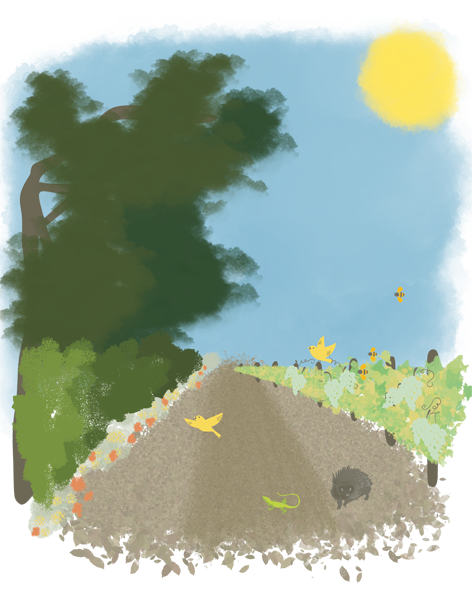A hedge or a hedgerow? A hedge typically refers to a closely planted row of shrubs or small trees, often trimmed and maintained to form a boundary. A hedgerow is a more diverse and natural. Its vegetation consists of a mix of woody shrubs, trees, wildflowers and grasses that offer a broad range of benefits. A key initiative of ours is to increase the presence of these ecological hedges composed of native species throughout our estate.
Why choose native species for hedgerows? Native plants are well-adapted to the local climate and ecosystem, including the wildlife and flora. By employing local plant species for hedgerows, we contribute to maintaining the ecological balance and preserving the unique genetic and endemic heritage of our region. We’ve initiated the use of cuttings or seeds sourced from our woodlands to cultivate these plants, ensuring their optimal adaptation to the environment and their resilience.
When visiting Bellecoste, at the bottom of the vineyard stands an example of our native hedgerows. This particular hedge features holm oaks, almond trees, and field elms. Underneath these trees lie shrubs such as strawberry trees, wild roses, and white hawthorns. Groundcovers like wild carrots, flame clematis, and calamint savory proliferate throughout. This blend of plants, with its brambles, branches, flowers, and fruits, forms a haven of biodiversity.
The multiple functions of hedges include…
For the vineyard:
For the ecosystem:
Did you know?
The most wildlife-friendly hedgerow consists of at least 3 layers of vegetation. If you look closely at our hedgerow, you will find herbaceous plants near the ground, shrubs a bit higher up, and trees towering above.

Illustration : Laurie – Bilden Studio
To enter our website, you must be of legal drinking age in your country.